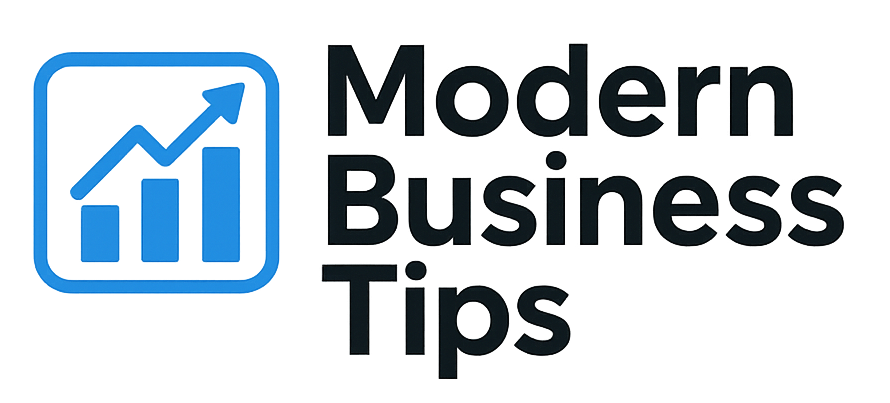Did you know teams that work together well can see a 21% boost in profits? This shows how important it is for teams to be in sync. When everyone is working towards the same goals, growth, productivity, and employee happiness can soar. In this article, we’ll explore what team alignment is and how to make sure teams are working together to achieve business goals.
Key Takeaways
- Team alignment boosts profitability and overall performance.
- Effective alignment fosters faster decision-making.
- Engaged employees are a result of clear alignment with business goals.
- Establishing team objectives is essential for alignment success.
- Communication is critical for maintaining alignment.
- Leadership plays a vital role in achieving alignment across teams.
Understanding Team Alignment and Its Importance
In today’s fast-paced business world, team alignment is key. It makes sure everyone works towards the same goals. Leaders must clearly share the company’s vision so everyone knows their part in it.
The Concept of Team Alignment
Team alignment means everyone works together towards common goals. When everyone knows their role and how it helps the team, work becomes more cohesive. This not only makes everyone happier but also helps achieve business goals.
How Team Alignment Impacts Performance
Teams that work together well perform better. Studies show teams that are aligned grow revenue 58% faster than others. Being aligned also makes employees more engaged and happy, which helps them work better together.
Realizing Business Goals through Team Efforts
To reach business goals, teams must be united. When everyone knows their part in the team’s success, success is more likely. This unity also makes team members more innovative and helps reach milestones faster.
Identifying Business Goals
To reach our goals, we start by identifying what we want to achieve. We break down big goals into smaller, doable steps. This makes it clear for everyone and keeps the team excited about their work in e-commerce.
Setting Clear and Achievable Objectives
Setting goals is key. We use tools like Objectives and Key Results (OKRs) to make big goals into smaller tasks. This way, each goal is clear and reachable. It makes everyone feel responsible and helps them see how their work helps the company.
Aligning Team Roles with Business Goals
It’s important to match team roles with business goals. When everyone knows how their job helps the company, it reduces confusion and boosts spirits. This makes everyone feel their work matters and helps us reach our big goals together.
Strategies for Effective Team Alignment
Effective team alignment starts with shared understanding and communication. I believe that setting a strong foundation with strategies for effective team alignment is key. A common vision for alignment is the base. It shows the team’s purpose and direction, helping everyone know how to contribute.
Being part of this process makes team members excited and clear about their roles.
Establishing a Common Vision
The first step is to create a common vision. This vision outlines the organization’s purpose, strategy, and goals. When team members know this, they can see how their work fits into the bigger picture.
This shared knowledge makes them more invested in their tasks. It also boosts their motivation. Keeping the vision alive through regular communication helps everyone stay focused on the main goals.
Promoting Open Communication
Open communication is vital for team communication. It creates a space where everyone can share thoughts and ideas. I always push for open discussions and feedback.
Regular meetings and team planning help keep these conversations going. Studies show that teams that communicate well are happier and more productive. This proves the power of being aligned.
| Strategy | Description | Benefits |
|---|---|---|
| Common Vision | Clearly define and communicate the organization’s goals and purpose. | Enhances motivation, ownership, and understanding of roles. |
| Open Communication | Foster an environment where feedback and discussions are encouraged. | Increases transparency and strengthens team connections. |
| Regular Meetings | Schedule consistent check-ins to discuss progress and challenges. | Keeps the team aligned and accountable for their responsibilities. |
| Collaborative Planning | Involve team members in the planning stages of projects. | Boosts engagement and improves overall project outcomes. |
Measuring Team Alignment
When I look at team effectiveness, I see that measuring alignment is key. It shows if our plans are working. I use Key Performance Indicators (KPIs) to check if teams hit their goals and help the company succeed.
Key Performance Indicators (KPIs)
KPIs are vital for tracking team progress. They give us numbers to see if teams are on track with our goals. Some common KPIs include:
- Project completion rates
- Quality of work produced
- Meeting deadlines
- Employee engagement scores
These KPIs help me spot where we need to focus or get better. By regularly checking them, I can see if our alignment plan is working.
Gathering Feedback from Team Members
Getting feedback from the team is also key. It shows us how well our alignment is working and where we can improve. Surveys and one-on-one talks give us important insights. They help me:
- Understand team morale and motivation
- Identify any challenges
- See how happy teams are with communication and teamwork
Looking at both KPIs and feedback helps us improve our alignment. By keeping an eye on these, I can make changes quickly to keep our alignment strong.
Overcoming Common Challenges in Team Alignment
In any team, common challenges like miscommunication and different work styles often pop up. To tackle miscommunication, we need to work together better. Understanding how everyone likes to communicate helps us all work together more smoothly.
Addressing Miscommunication
Miscommunication can really block team alignment. Teams might have different ways of talking, leading to misunderstandings and fights. To fix this, setting up clear communication plans is key. This includes regular meetings, writing down decisions, and using tools that help everyone stay in sync.
Navigating Different Work Styles
Getting used to different work styles is key to a happy team. I’ve seen that when we work together and respect each other’s ways, we all feel included. This makes it easier for everyone to work together well and reach our goals together.
| Challenge | Solution |
|---|---|
| Miscommunication Due to Different Styles | Implement structured communication practices |
| Lack of Awareness of Work Styles | Encourage collaboration and open discussions |
| Isolation of Team Members | Promote team-building activities and interdepartmental projects |
The Role of Leadership in Team Alignment
Effective leadership is key to team alignment. Strong leaders set goals and inspire their teams to follow. They create a work environment based on trust and teamwork.
Leading by Example
Leaders who show commitment to goals set a high standard. This inspires team members to work together. The Navy SEAL Teams show how leaders set the pace.
A culture of alignment grows when leaders live the values. Team members see the importance of shared goals.
Empowering Team Members
Empowering teams boosts engagement and productivity. Leaders give resources and training, letting team members own their work. This builds confidence and aligns everyone towards goals.
Regular talks about team goals help everyone understand their role. Each member’s work becomes part of the bigger mission. For more, check out the six pillars of leadership and team alignment.
| Leadership Practice | Impact on Team Alignment |
|---|---|
| Leading by Example | Establishes a standard for behavior and commitment |
| Empowering Teams | Enhances engagement and ownership of tasks |
| Regular Communication | Clarifies roles and expectations |
| Knowledge Sharing | Builds trust and collaboration among team members |
Tools and Technologies for Better Alignment
In today’s fast world, the right tools for team alignment are key. Project management software and communication platforms are the heart of teamwork. They help us work better together, leading to success in our goals.
Project Management Software
Software like Asana and Trello keeps everyone on track. It lets me assign tasks and track progress in real-time. This makes it clear how each person’s work fits into the bigger picture.
Using these tools helps us understand what’s important and who’s doing what. It makes it easier to handle any problems that come up.
Communication Platforms
Good communication is essential for a team to succeed. Platforms like Slack and Microsoft Teams help us talk and share updates fast. They give us places to discuss goals and share news, keeping everyone in the loop.
These tools help us have open conversations. This is key for working together well and aligning our efforts.
In short, using project management software and communication platforms boosts team alignment. By choosing the right tools, we can make our work smoother and more productive. These technologies help us organize and succeed together, reaching our goals.
Fostering a Collaborative Culture
A collaborative culture is key for team alignment and workplace harmony. When team members take part in decisions, they feel more responsible. This leads to more engagement and creativity.
In my experience, teams do best when everyone’s voice is heard and respected.
Encouraging Team Participation
To encourage team participation, we use several strategies. We hold regular brainstorming sessions for everyone to share ideas. An open-door policy lets for spontaneous talks, showing that every opinion counts.
Feedback loops help team members see how their work helps achieve bigger goals.
Building Trust and Respect Among Team Members
Building trust in teams starts with clear communication and honesty. I focus on creating a space where respect is mutual. Trust grows when we keep our promises.
By celebrating our wins together, we build stronger bonds. This shows the value of teamwork and strengthens our culture.
Continuous Improvement Practices
To keep my team aligned, I focus on regular check-ins and adapting strategies. These steps help us stay on track with our goals. They also help us adjust to changes in our work environment.
Regular Check-Ins and Feedback Loops
Regular check-ins let team members talk about their progress and challenges. These talks help us share feedback and see how we’re doing. Positive feedback boosts our motivation, while constructive criticism helps us get better.
Through these talks, we learn to improve together. This creates a culture of ongoing improvement in our team.
Adapting Strategies Based on Results
After our regular check-ins, I evaluate our strategies based on results. This helps me see what’s working and what needs tweaking. Being open to change ensures our team’s efforts match our business goals.
By always looking to improve, we stay focused on success together. This shows our dedication to working as one team.
Case Studies of Successful Team Alignment
Looking at different case studies on team alignment shows us how it can change a company. For example, Google and Adobe use Objectives and Key Results (OKRs) to make things clear and hold people accountable. These tools help everyone work together towards big goals and make the team feel motivated and open.
Examples from Leading Companies
Google is a great example. They use OKRs to guide their work. This makes sure everyone knows what they’re aiming for. Adobe also uses a feedback system to keep teams on track and moving fast. These examples show how teams can come together to get great results.
Lessons Learned from Real-World Applications
These stories teach us that team alignment is more than just methods. It’s about the culture that supports those methods. Companies that talk openly and trust each other do better in tough times. Learning from these examples can help other companies avoid mistakes and reach their goals faster.



